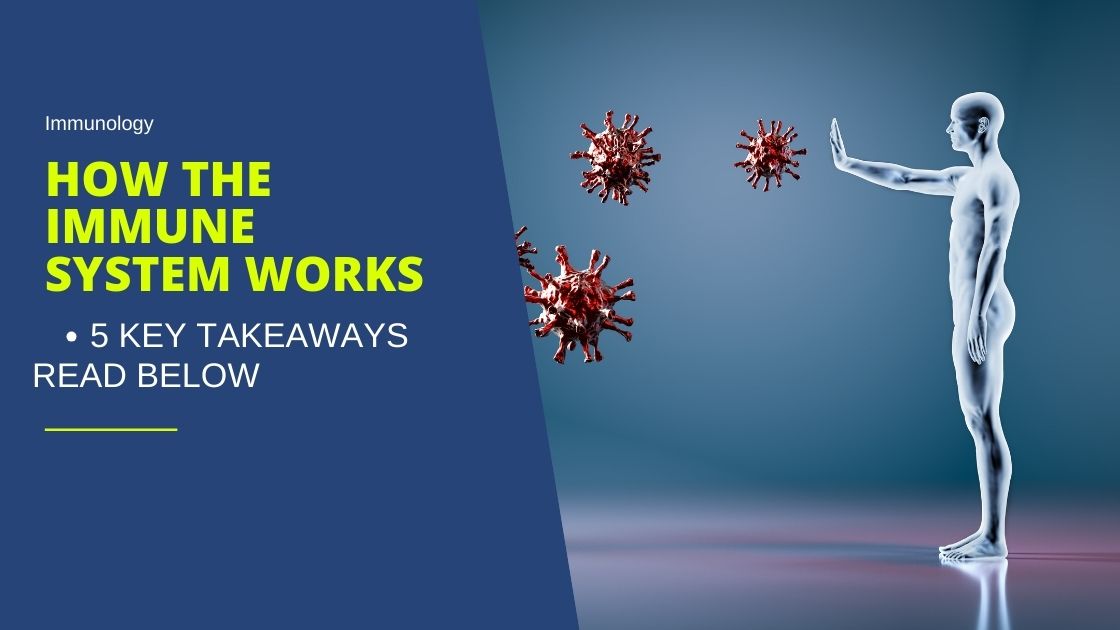How Does the Immune System Function? Leave a comment
The immune system is a complex network of mechanisms that protect the body from harmful invaders while maintaining tolerance to self. Understanding how the immune system recognizes pathogens, initiates defense responses, and forms long-term memory cells reveals the body’s adaptability and protection abilities. However, malfunctions in this system can lead to autoimmune disorders or immune deficiencies. Explore the mysteries of this essential aspect of human biology to gain insights into the body’s defense mechanisms.
Main Points
- Cells and organs collaborate to combat infections.
- Pathogen recognition via PRRs initiates immune responses.
- Antibodies attach to antigens for elimination.
- Immune memory facilitates faster, more robust responses.
- Self-tolerance mechanisms regulate autoimmunity.
Immune System Components
The immune system is a network of specialized cells, tissues, and organs that work together to protect the body from pathogens and foreign invaders. Key components include organs like the thymus, spleen, and lymph nodes, which are crucial for immune responses. The lymphatic system consists of vessels carrying lymph fluid with white blood cells for immune cell circulation and communication.
White blood cells, or leukocytes, are the main defenders of the immune system. They include macrophages, neutrophils, and natural killer cells, each with specific pathogen-fighting roles. Antibodies, produced by B cells, are proteins that bind to antigens on pathogens to mark them for destruction by other immune cells.
Understanding the functions of immune system organs, white blood cells, and antibodies reveals the complex defense mechanisms that protect the body from infections and maintain overall health.
Pathogen Recognition
The immune system identifies pathogens through specific molecular patterns known as pathogen-associated molecular patterns (PAMPs). These patterns are recognized by pattern recognition receptors (PRRs) on immune cells. When a PRR binds to a PAMP, it triggers a series of events leading to immune responses against the invading pathogen. One crucial aspect of pathogen recognition is antigen binding, where the immune system detects foreign molecules on the surface of pathogens. Pathogens employ various mechanisms of immune evasion to avoid detection, such as disguising themselves or inhibiting immune cell function.
Immune Response Activation
Recognition of pathogen-associated molecular patterns by pattern recognition receptors initiates immune response activation through a series of signaling events. This activation leads to the release of pro-inflammatory cytokines, attracting immune cells to the infection site and starting the inflammatory response. Antigen-presenting cells like dendritic cells capture and process antigens from the pathogen, presenting them to T cells to activate adaptive immunity. Cytokine signaling is crucial for coordinating the immune response and regulating immune cell proliferation, differentiation, and movement for an effective immune reaction. Cytokines also modulate the balance between different immune cell subsets, influencing the overall immune response.
Memory and Immunity
Activation of memory and immunity involves specialized immune cells that store information about previous encounters with specific pathogens. When your body meets a pathogen for the first time, it triggers an immune response and produces memory cells like memory B cells and memory T cells. These memory cells retain information about the pathogen, enabling a quicker and more robust immune response upon future encounters. This process is referred to as immune memory.
Vaccination is crucial for enhancing immune memory. By introducing a weakened or inactive form of a pathogen through immunization, the immune system generates memory cells without causing the actual disease. This prepares the immune system to recognize and respond promptly to the pathogen later on. The effectiveness of vaccination depends on how well it stimulates the production of memory cells, resulting in a more efficient immune response when facing the real pathogen.
Autoimmunity and Regulation
Autoimmunity arises when the immune system mistakenly attacks the body’s cells and tissues, leading to autoimmune diseases like rheumatoid arthritis, lupus, and type 1 diabetes. Self-tolerance mechanisms typically prevent such attacks, but when they fail, immune cells target self-antigens as foreign, provoking a harmful immune response against healthy tissues.
Treatment for autoimmunity often involves immunosuppressive therapy to lessen the immune response and mitigate damage caused by the immune system’s assault. Commonly used immunosuppressive drugs include corticosteroids, methotrexate, and biologics, which regulate the immune system’s activity to manage autoimmune conditions. While these medications can alleviate symptoms and prevent further tissue damage, they may also entail potential side effects due to their broad impact on the immune system. Understanding self-tolerance mechanisms and developing more targeted immunosuppressive therapies are crucial for effectively addressing autoimmune diseases.
Conclusion
The immune system operates through specialized cells, tissues, and organs working together to defend the body against pathogens. Recognition of pathogens initiates immune response activation, leading to antibody production and the formation of memory cells for improved immunity. Understanding the complex workings of the immune system is crucial for maintaining overall health and effectively combating infections.

